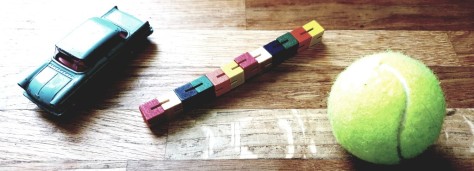I sat on the floor of the speech therapists office. She sat opposite and looked at me.
“It’s ok” she said.
It was Rhys’ speech and language session. The third in a block of four which we had waited six months for, but Rhys was not there. He had not been in any of the sessions, leaving me to sit alone, stressed and trying to think of a way to get him to come into the room. I could see him through the open door, he sat in the waiting room on one of the big blue sofa’s, his number flashcards in his hands, each one being moved as it was counted.”What is your biggest challenge at the moment” she asked.
It was such an open question. Everything was a challenge, and I had no idea of where to start or even articulate the complexity of our current situation, so I just said the first thing that came into my head, “I just want to be able to leave the house!”
It was the biggest thing for me, and the most simplest action for any other family.
“What is stopping you” she asked
“When we walk out the house” I started to explain, “Rhys assumes we are either going in the car, or sometimes up to the park, but we will actually be going across the road to the school. It ends up with him on the floor in meltdown, because he thinks we are going somewhere else”
“How do you let him know where you are going?””I tell him” I responded.
She looked at me and repeated a summary of our predicament. “So when you leave the house, there are three options. The park, the car or across to the school?”
“Yes, and I tell him where we are going, but he wants to go somewhere else”
“I want you to go home and get three objects. A toy car, something to represent the park, perhaps a ball and then something for school” she explained. “When you leave the house, take the object representing where you are going, and place it in his hand and state clearly where you are going”
As soon as I got home, I started searching. I found an old blue car in the bottom of a drawer, and behind the door I found a tennis ball, the perfect object for the park. School was difficult, and I could find nothing to represent it, so I settled on a colourful stick in the hope that it would work.

An hour later, I needed to walk across the road to collect my eldest from school. Ready for a full meltdown, I nervously bent down to Rhys’ level and placed the small stick in his hand. He grasped it, feeling the edges press into his soft palm.
“Rhys, school” I said.
I then took his hand and nervously walked out the house. He collapsed to the ground, the stick in his hand in the same way he did every day, but I persevered. I pressed his hand against the stick and stated “school”. It continued to be hard, but I continued with the process and over the next few days, the objects started to associate themselves with the activity.
A week later, I placed the stick in Rhys’ hand, stating the activity in the same way I had done everyday, “School”. He held the stick in his hand and looked down at its colours. I opened the front door, took his hand and we walked across the road and down to the playground. All the other parents stood chatting amongst themselves. I stood with my son, his one hand in mine and his other clasping the little coloured stick. He was smiling.
No one looked at us. They didn’t look because for the first time we stood calmly, both fully aware of the sequence of events. I wanted to stand up on the table in the corner and announce our accomplishment. I was beaming with pride inside. We had made it across the road, not a meltdown, kick or scream in sight.
Those three objects saved our lives. They helped me communicate with my son. We soon progressed to pictures, and still use pictures today in new and complex situations. But today we leave the house like any other family, announcing our destination verbally, with not a tear in sight.
I still have the toy car, the tennis ball and the stick. They were three objects that represented activities to Rhys, but today they are objects which represent so much more to me. They represent a breakthrough. The journey forward and finding a way to communicate with my son.
Click here to get a step by step guide on using objects of reference to engage with your child.



